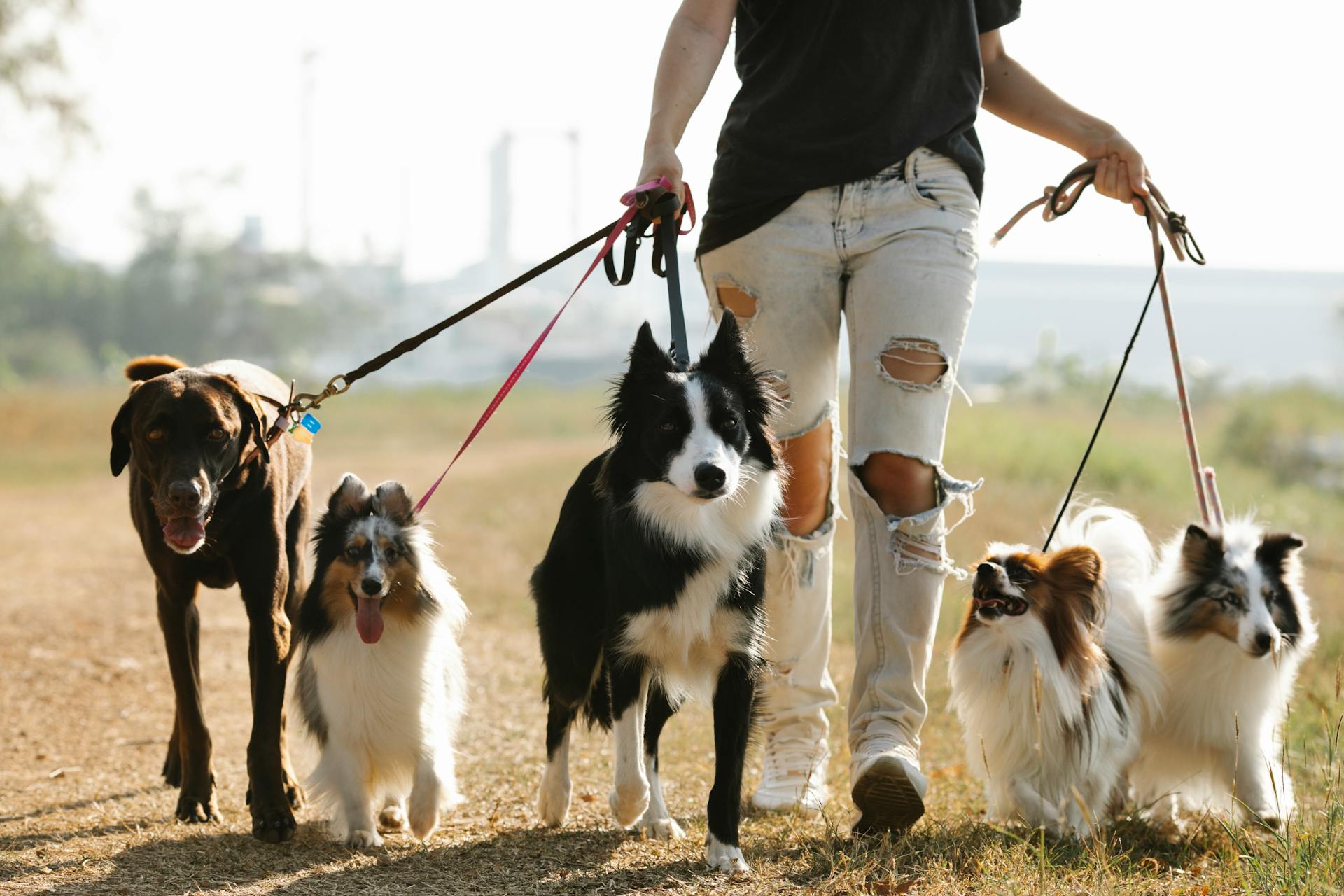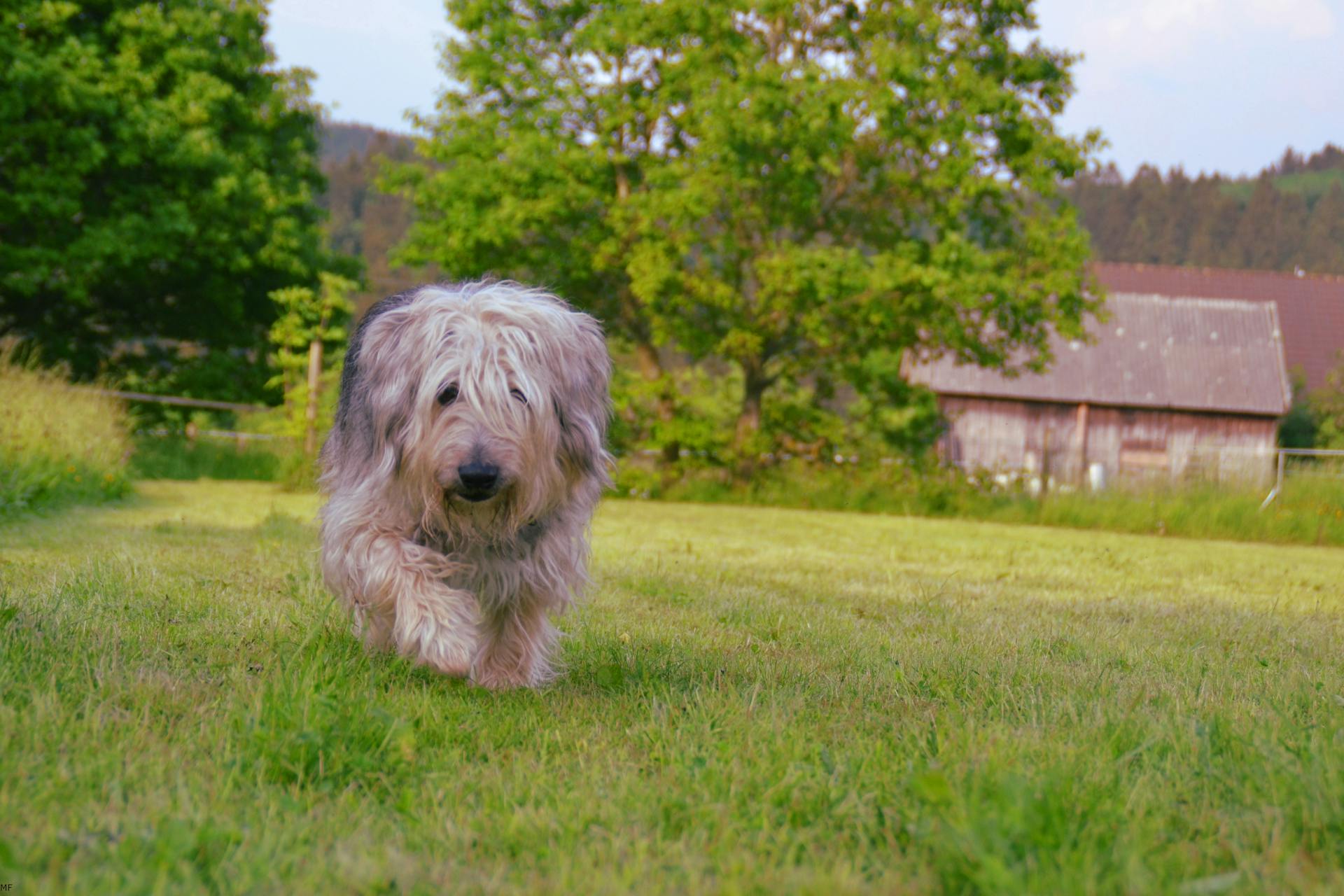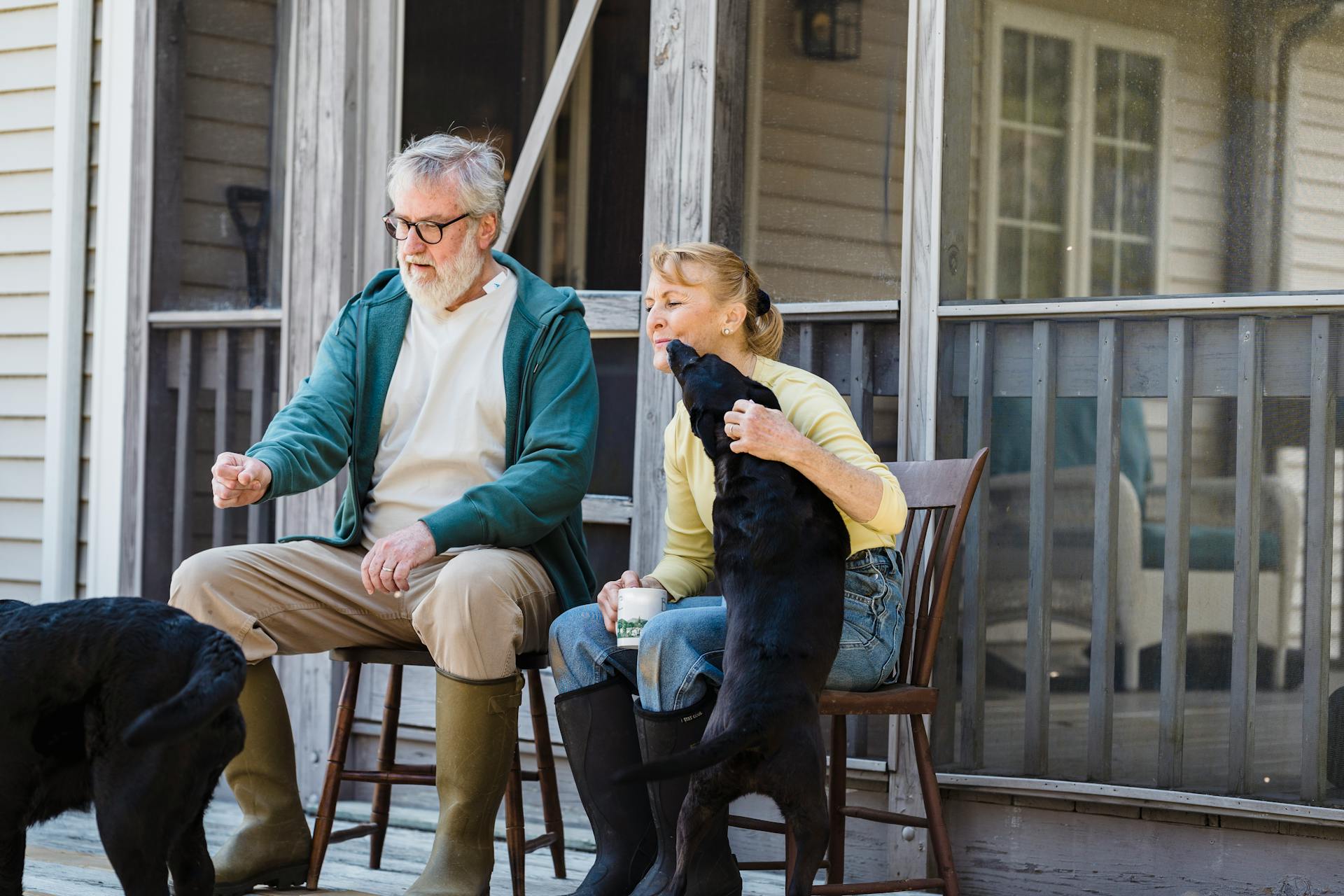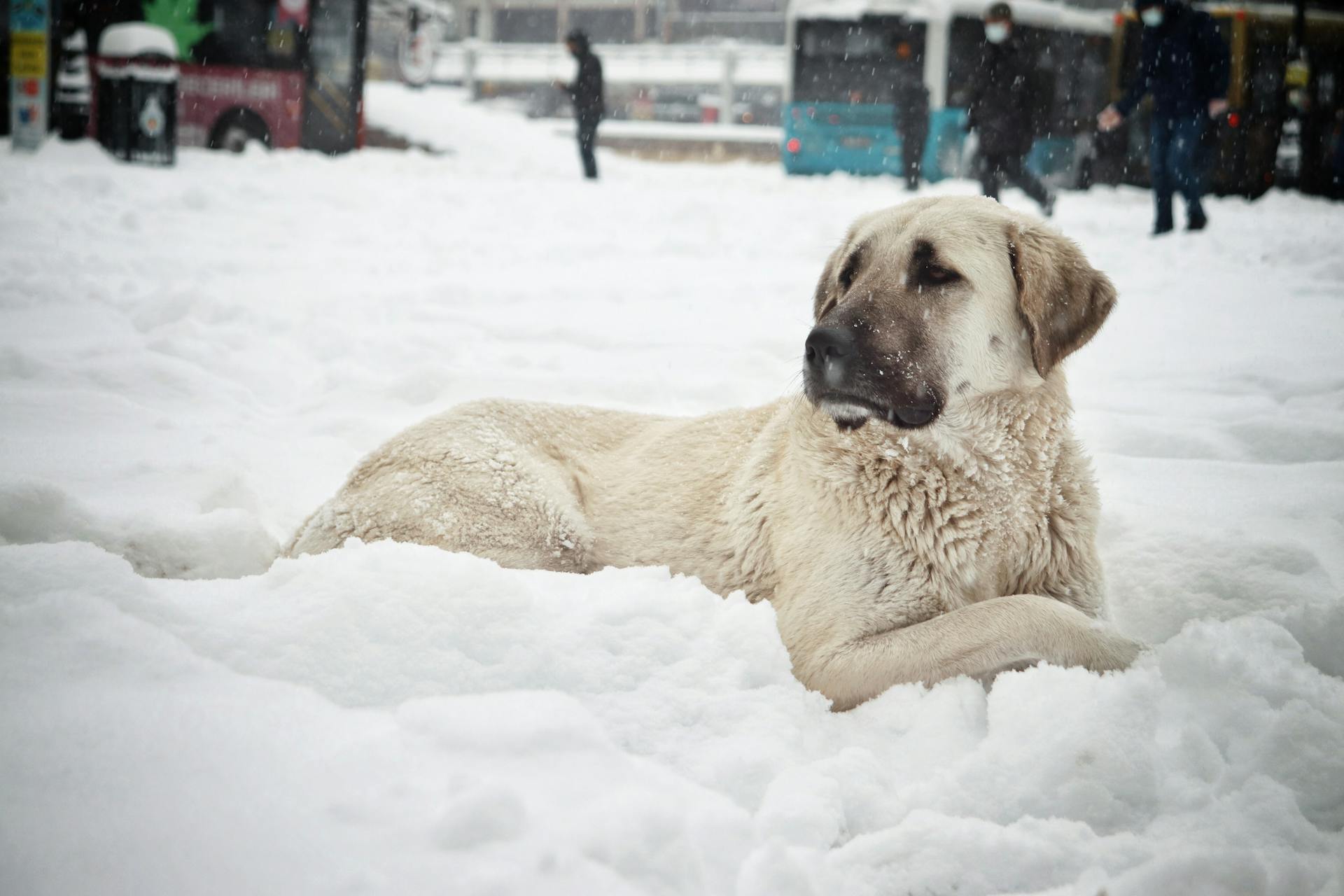
The Kurdish Kangal Dog is an ancient breed with a rich history, known for its distinctive physical characteristics and impressive guarding abilities.
This breed is a large dog, with males weighing between 110-145 pounds and standing 30-32 inches tall at the shoulder.
They have a short, dense coat that requires minimal grooming.
Their distinctive appearance is often described as muscular and athletic, with a broad chest and well-sprung ribs.
Their powerful build is a testament to their original purpose as a livestock guardian.
Origin and History
The Kurdish Kangal Dog has a rich and fascinating history that spans centuries. It originated in the district of Kangal in the Sivas region of Turkey during the 12th century.
This ancient breed was highly valued by the Turkish people, who considered it a national treasure. The Kangal has even appeared on Turkish coins and postage stamps.
The Kangal's ancestors date back to early mastiff-type dogs depicted in Assyrian art, which suggests a long and storied history.
Origin of the Breed
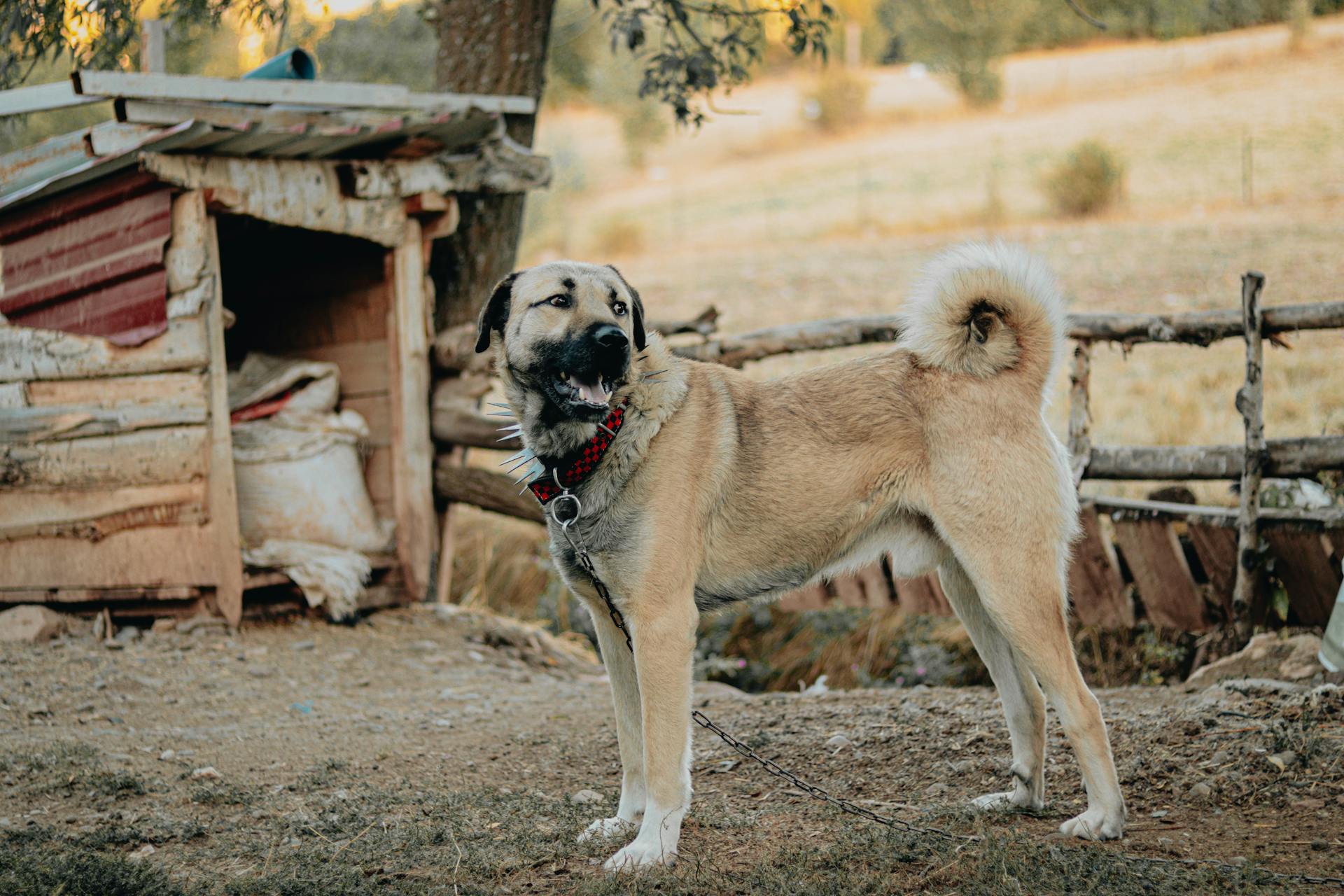
The Kurdish Kangal Dog, also known as the Kangal, has a rich history dating back to the 12th century.
They originated in the Turkish town of Kangal, where they were bred as sheepdogs due to their natural guarding ability.
The breed was highly valued by the Turkish people and held a special cultural and historical status in Turkish society.
Many consider the Kangal to be the national dog of Turkey, and it has even appeared on Turkish coins and postage stamps.
The Kangal was selectively bred over hundreds of years, resulting in its distinctive size, strength, temperament, and personality.
The breed's relative isolation in the Sivas-Kangal region kept it free of crossbreeding, resulting in a natural breed of remarkable uniformity in appearance, disposition, and behavior.
The Kangal was originally used to guard flocks of sheep and goats from wolves, bears, and jackals, and many farmers and shepherds still place spiked collars on their dogs to protect them from wolf bites.
You might like: Dogo Argentino Natural Ears
Today, the Turkish government and academic institutions operate breeding kennels where Kangal dogs are bred and pedigrees are carefully maintained.
The breed was first exported to the United Kingdom in 1965 and to the United States in 1985, where it became popular for its ability to guard livestock on large farms.
The breed received official recognition from the United Kennel Club in 1998, and the English breeders continued to breed exclusively along Kangal lines.
Expand your knowledge: Shiba Inu in Usa
Breed's Genetic Distinctness
The Kangal breed's genetic distinctness is a fascinating topic. The most highly prized Kangal lineage is traceable to the Uzun Yayla region in Turkey.
Geneticists have been working to maintain the purity of this breed by implementing selective genetic management. This process involves identifying and preserving only the purest lineage of Kangal dogs.
A key factor in determining genetic distinctness is the repetition of a single DNA marker, called haplogroup D, in pedigree Kangals. This marker is considered the truest genetic connection to the beginning of this breed.
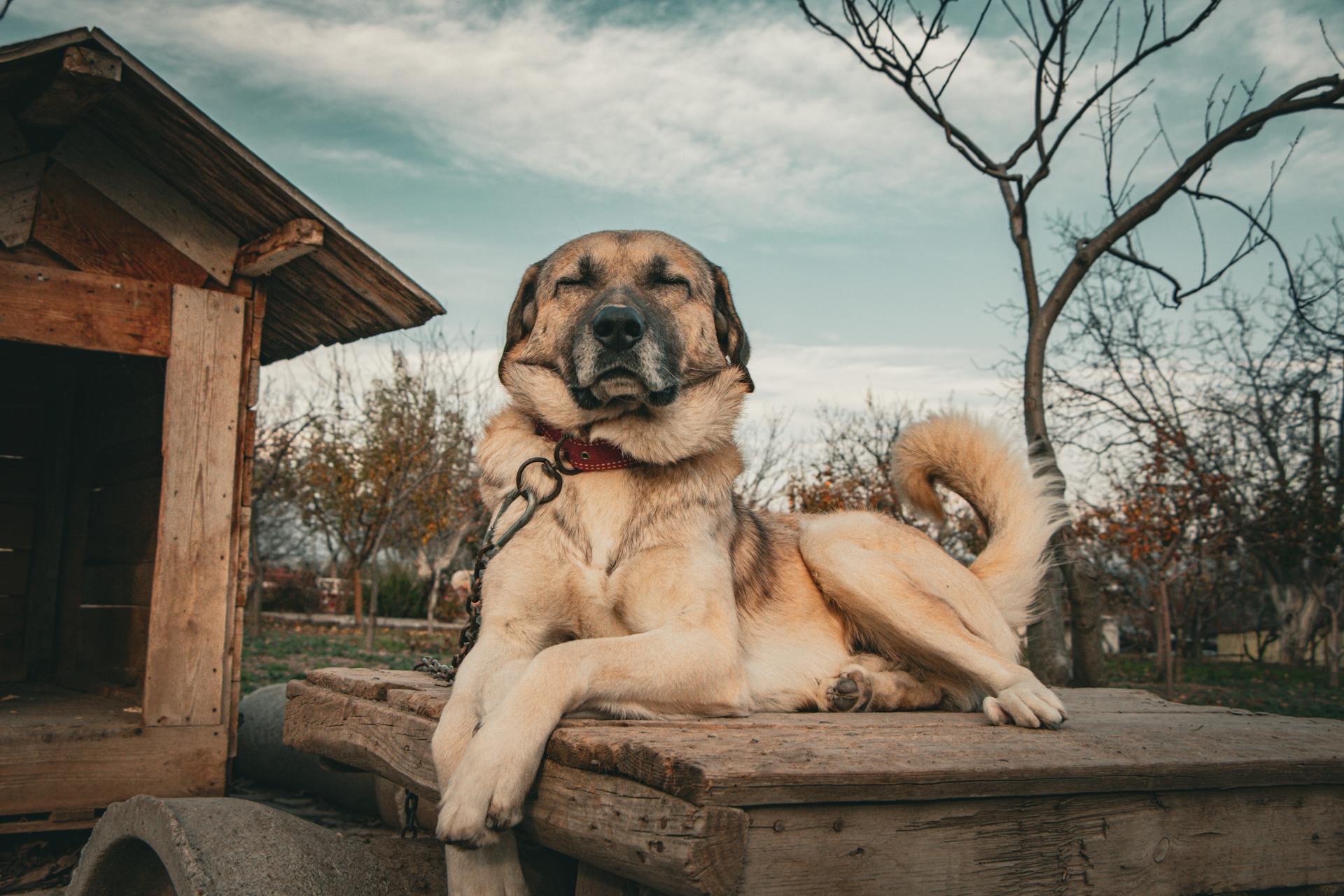
To put this in perspective, think of it like a family tree. The repetition of this DNA marker is like a common ancestor that links all the Kangal dogs together, making it a crucial factor in their genetic distinctness.
The Kangal Kopegi Selcuk University Department of Biochemistry Faculty of Veterinary Medicine has been involved in this research, along with other organizations such as the Kangal Dog Club of America and the Kangal International.
Here are some key resources that provide more information on the Kangal breed's genetic distinctness:
- Kangal Kopegi Selcuk University Department of Biochemistry Faculty of Veterinary Medicine
- Kangal Dog Club of America: Is a Kangal Dog the Right Companion Dog for Me?
- KDCA Database: Kangal Dog Health and Pedigree Database
- Kangal International: Kangal Dog Standard
- United Kennel Club: Kangal Dog
Physical Characteristics
The Kurdish Kangal dog is a large and muscular breed with a light tan coat and dark floppy ears. Their tails curl up with the tip facing their backsides.
They can appear intimidating due to their massive size, but their agility and athletic ability are quite impressive. In fact, they can run up to 30 miles per hour.
An average Kurdish Kangal weighs between 121 to 143 pounds and stands between 29 to 33 inches tall. Males are typically larger than females.
Their coats shed during spring and winter, so be prepared for some extra grooming during these seasons.
Behavior and Temperament
The Turkish Kangal is a loyal and devoted companion, but it's essential to establish your role as the leader of the pack while they're young. They start to think on their own from around 2 years of age, so early training is crucial.
Kangals are naturally protective of their flock and property, but they can also be calm and gentle. They are trustworthy guardians of adults, children, and family pets they consider part of their pack.
Their intelligence and high energy levels make them excellent watchdogs, but they require active and early socialisation as young puppies to develop a calm temperament. This involves exposing them to unfamiliar sights, sounds, smells, people, and animals.
A well-raised Kangal will obey any order given by their master, but they may attack any undeterred intruders. They are reserved with strangers but smart enough to know when to calm down, threaten an enemy, or attack a perceived predator.
Kangals are renowned for their robust health, and with proper care, they can live a long and happy life.
Suggestion: Other Dogs Attack My Dog
Care and Maintenance
To keep your Kurdish Kangal happy, they need to be active through regular walks and interaction with familiar humans. Boredom can lead to destructive behavior and aggression.
These dogs require a lot of attention and positive reinforcement during training, so be patient and understand how to discipline them properly.
Caring For
To keep your Kurdish Kangal happy, they need to be active through regular walks and interaction with familiar humans.
Boredom can lead to destructive behavior and aggression, so make sure to provide them with enough mental and physical stimulation.
These dogs require a lot of attention and positive reinforcement during training, so be prepared to invest time and effort into their education.
You'll need to have patience and understand how to discipline them properly, or you may end up with a dog that's difficult to handle.
Grooming
Grooming is a crucial part of Kurdish Kangal care. They shed twice a year, requiring daily brushing in the spring and winter.
Their coats need brushing every day during these seasons to prevent matting and tangling. In non-shedding months, twice a week is sufficient.
Monthly bathing is a good rule of thumb, as over-bathing can strip their coats of natural oils. This can cause dryness and damage.
Kurdish Kangals are prone to drooling, so regular oral care is essential. Experts recommend brushing their teeth twice a week to keep their mouths healthy.
Dogs' Health
Hip and elbow dysplasia can affect Kurdish Kangals, causing pain and stiffness in the joint, which can lead to gait disabilities if left untreated.
Kurdish Kangals can also develop lipomas, benign and painless fatty lumps on their chest and abdomen, although these can become large and annoying.
Regular check-ups with a veterinarian can help catch these issues early on, making it easier to correct them.
Turkish Kangals are prone to ligament injuries, arthritis, and heart disease, which can be managed with proper care and attention.
As Kurdish Kangals age, they can become overweight, so monitoring their diet and exercise is crucial to maintaining their overall health.
Price
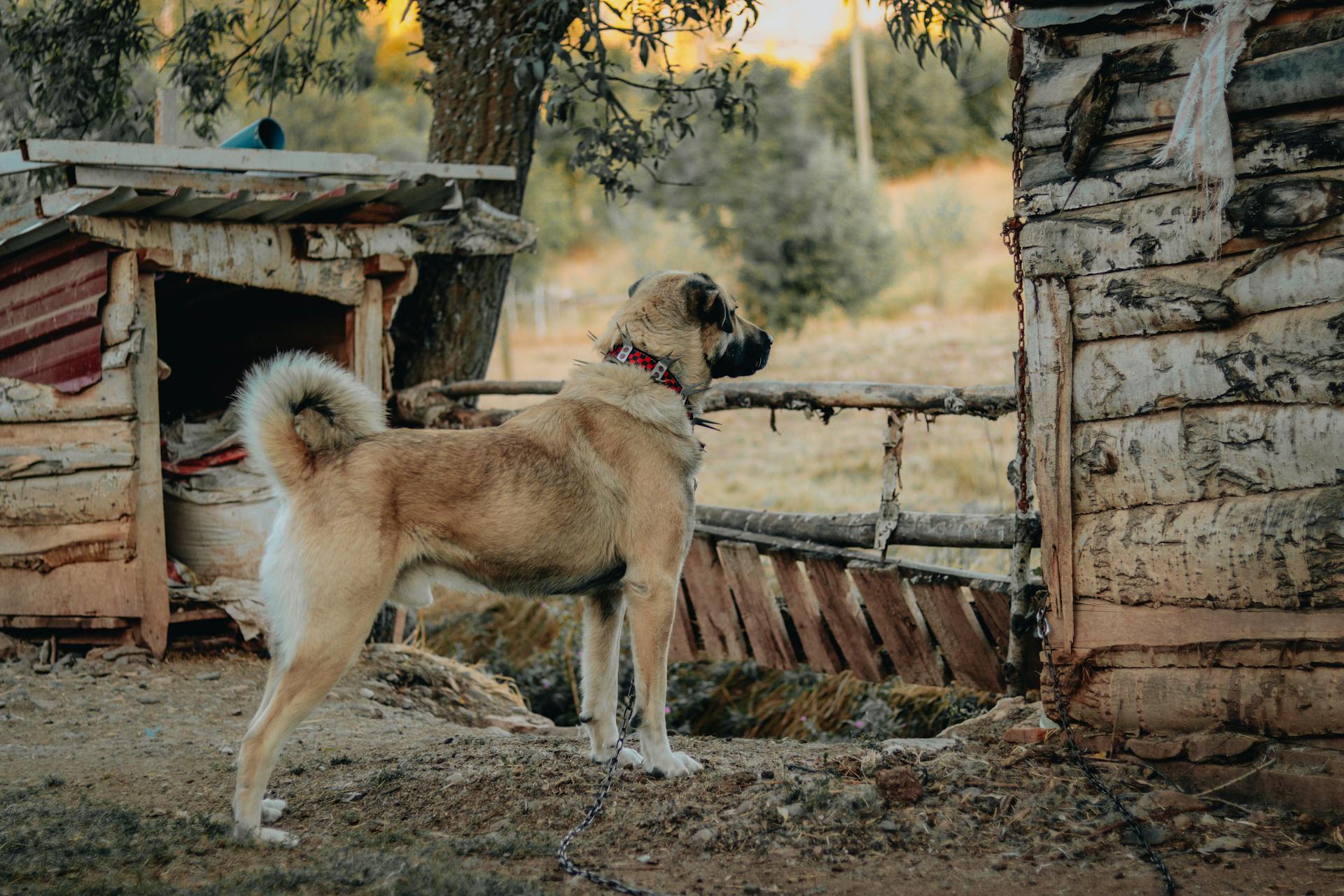
The price of owning a Kurdish Kangal can be a significant factor to consider. You can expect to pay between $1200-$2500 per pup in the United States.
The cost is due to the rarity of the species, making it a unique investment for dog owners.
Companionship and Protection
Kurdish Kangal dogs make great companions, being affectionate and loving to spend time with family.
They are very friendly to humans they know, such as family members, but will defend their homes if they feel threatened.
These dogs are loyal to their owners and will follow commands, making them a great addition to any family.
Readers also liked: Can Shiba Inu Reach 1 Cent
They Make Great Companions
Kangal shepherd dogs are affectionate and love spending time with family. They're very friendly to humans they know, such as family members, but will defend their homes if they feel threatened.
These dogs are loyal to their owners and will follow commands. They're very protective of their property and will fight off any perpetrators with force.
Kangals are anything but lazy, they stay aware of their surroundings and are always ready to fight when necessary.
If you treat your Kangal well, it will reciprocate kindness to you. They mimic the behaviors of those around them.
Discover more: When Will Shiba Inu Hit $1
Protectors of Territory
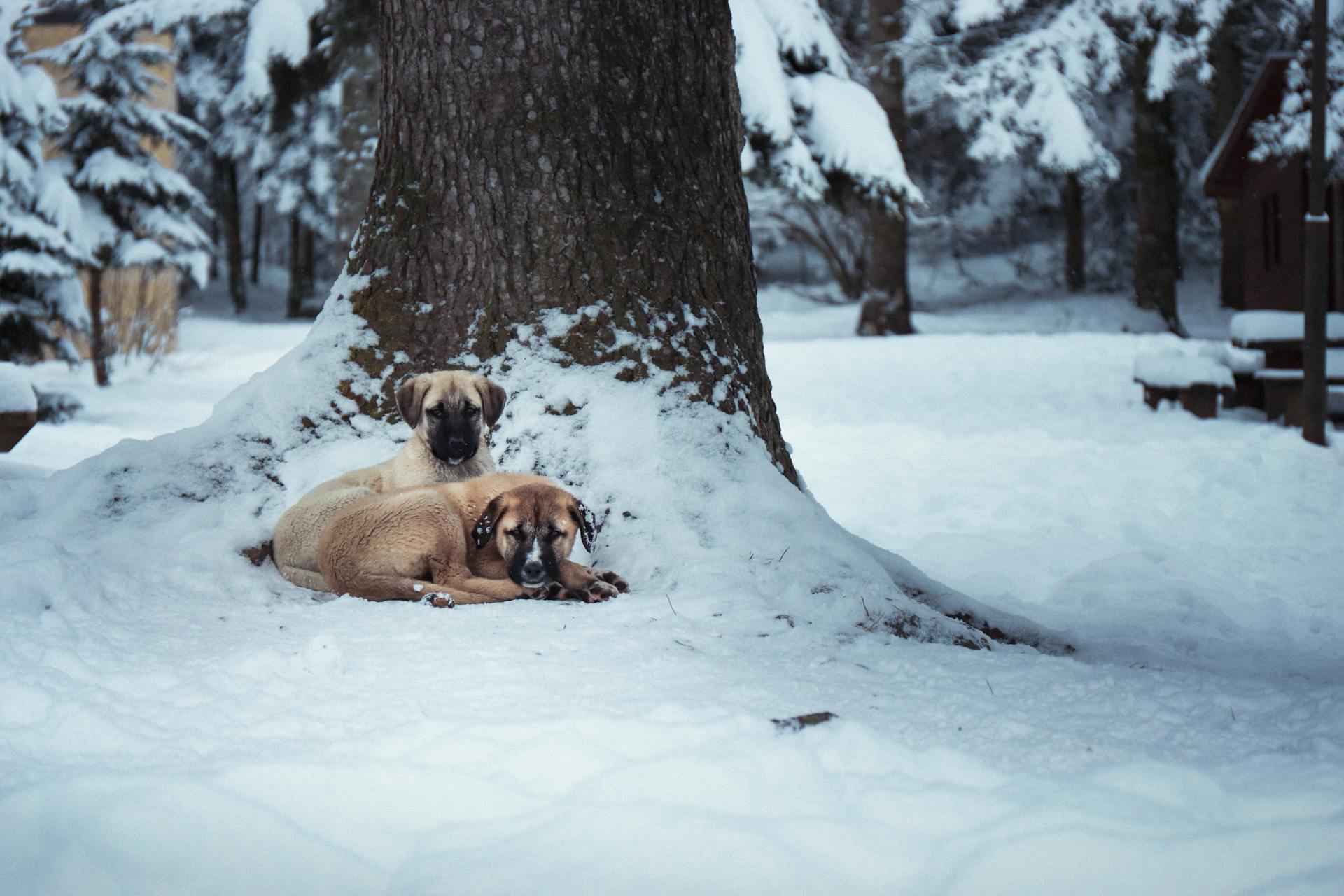
Kurdish Kangal dogs are natural-born protectors who keep a watchful eye on strangers and will independently attack if they feel a threat to their environment.
They are very territorial and have the instinct to attack strangers who appear dangerous.
Appropriate training can help control their urges and only act on them when the situation warrants it.
Kangals are highly intelligent and know when to approach someone.
For the most part, Kangals do not like to kill predators. They will try to deter them away before becoming aggressive.
Farmers may find Kurdish Kangals helpful in watching over their livestock and the other animals they keep on the farm.
Related reading: When Is a Female Dog Ready to Breed
Bite Force and Suitability
The Kurdish Kangal Dog's bite force is a force to be reckoned with, capable of delivering a crushing 743 pounds per square inch (PSI). This impressive bite force is due in part to the breed's robust jaw structure and powerful muscles.
Kurdish Kangal Dogs are naturally suited to guarding livestock, making them a popular choice for farmers and herders. Their strong protective instincts and keen senses allow them to detect and deter potential threats.
Their size and strength also make them well-suited to guarding larger properties and families.
Related reading: Turkish Kangal Dog Bite Force
Strong Bite Force
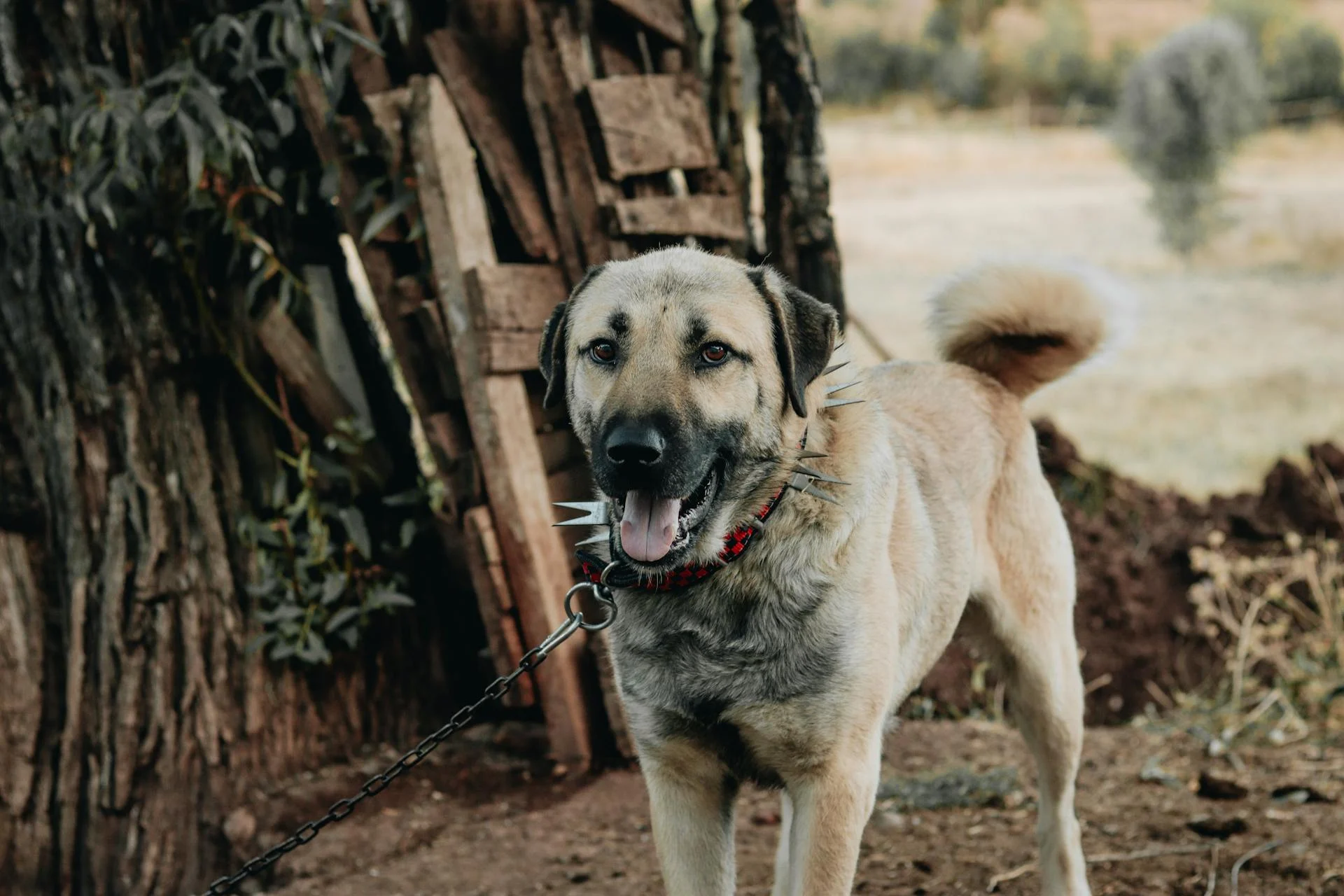
The Kurdish Kangal breed has a bite force of 743 pounds per square inch, the heaviest among all breeds. This is a significant factor in their protective nature.
Their bites can be painful and quite destructive to intruders and predators. This is a result of their strong teeth for chewing and protecting themselves.
Is This Dog Suitable for Me
If you're considering bringing a Kangal into your family, you'll want to think carefully about your living situation and lifestyle. A fenced yard is essential for these large dogs.
Kangals have a strong herding instinct, which means they can be protective and independent. They're great with children and other pets, but it's crucial to monitor interactions with small children and new animals.
Their size and energy level require regular exercise and mental stimulation. With proper care, Kangals can thrive and become devoted companions.
Frequently Asked Questions
Is a Turkish Kangal a good family dog?
Yes, a Turkish Kangal is a loyal and protective companion, making them a great fit for families with children and pets. They are gentle and trustworthy, forming strong bonds with their pack.
Are Kangals legal in the US?
Kangal dogs are generally legal in the United States, but local regulations and insurance policies may apply. Check local breed-specific legislation and insurance requirements before bringing a Kangal home.
Featured Images: pexels.com
